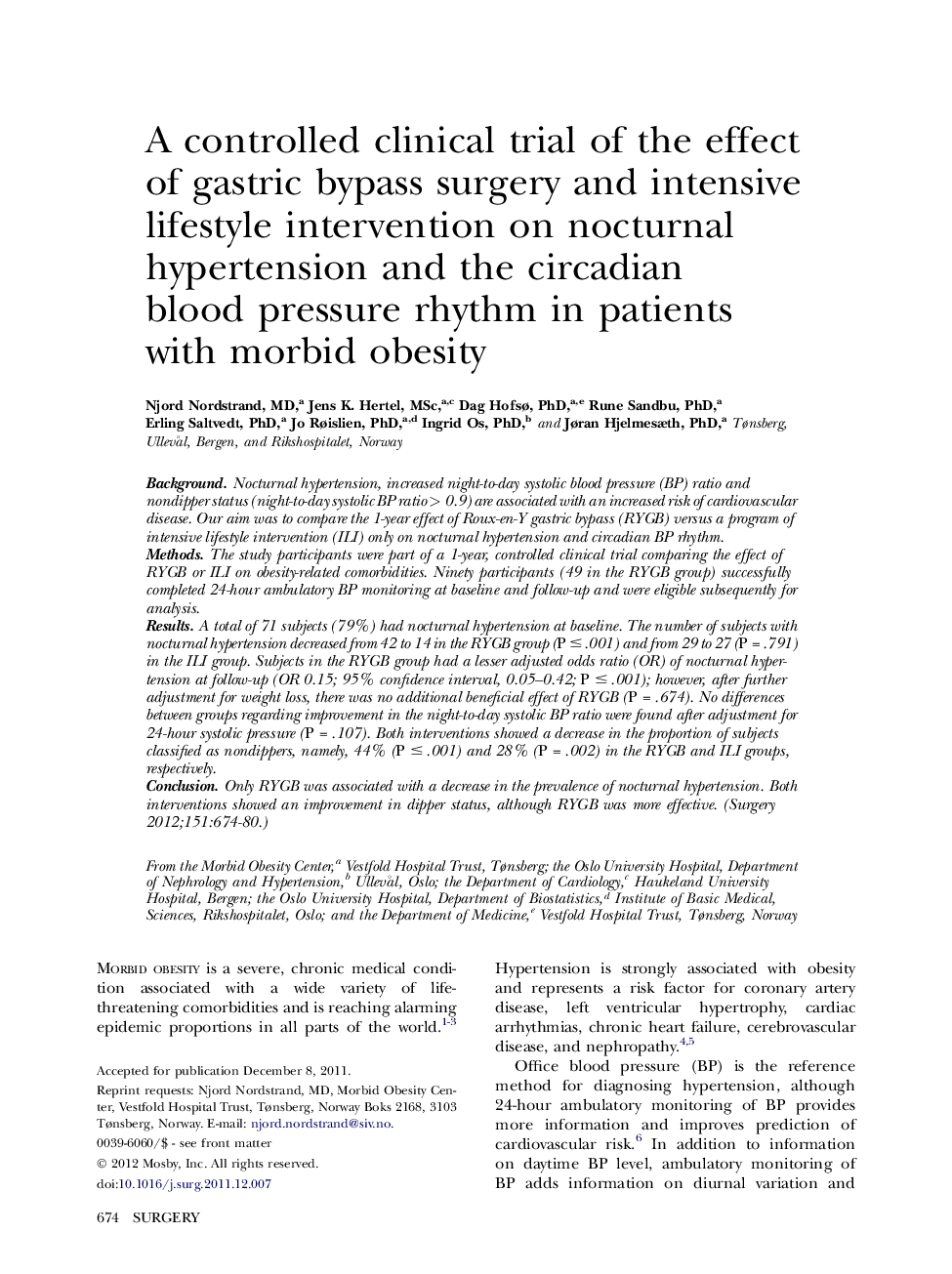| Article ID | Journal | Published Year | Pages | File Type |
|---|---|---|---|---|
| 4308459 | Surgery | 2012 | 7 Pages |
BackgroundNocturnal hypertension, increased night-to-day systolic blood pressure (BP) ratio and nondipper status (night-to-day systolic BP ratio > 0.9) are associated with an increased risk of cardiovascular disease. Our aim was to compare the 1-year effect of Roux-en-Y gastric bypass (RYGB) versus a program of intensive lifestyle intervention (ILI) only on nocturnal hypertension and circadian BP rhythm.MethodsThe study participants were part of a 1-year, controlled clinical trial comparing the effect of RYGB or ILI on obesity-related comorbidities. Ninety participants (49 in the RYGB group) successfully completed 24-hour ambulatory BP monitoring at baseline and follow-up and were eligible subsequently for analysis.ResultsA total of 71 subjects (79%) had nocturnal hypertension at baseline. The number of subjects with nocturnal hypertension decreased from 42 to 14 in the RYGB group (P ≤ .001) and from 29 to 27 (P = .791) in the ILI group. Subjects in the RYGB group had a lesser adjusted odds ratio (OR) of nocturnal hypertension at follow-up (OR 0.15; 95% confidence interval, 0.05–0.42; P ≤ .001); however, after further adjustment for weight loss, there was no additional beneficial effect of RYGB (P = .674). No differences between groups regarding improvement in the night-to-day systolic BP ratio were found after adjustment for 24-hour systolic pressure (P = .107). Both interventions showed a decrease in the proportion of subjects classified as nondippers, namely, 44% (P ≤ .001) and 28% (P = .002) in the RYGB and ILI groups, respectively.ConclusionOnly RYGB was associated with a decrease in the prevalence of nocturnal hypertension. Both interventions showed an improvement in dipper status, although RYGB was more effective.
